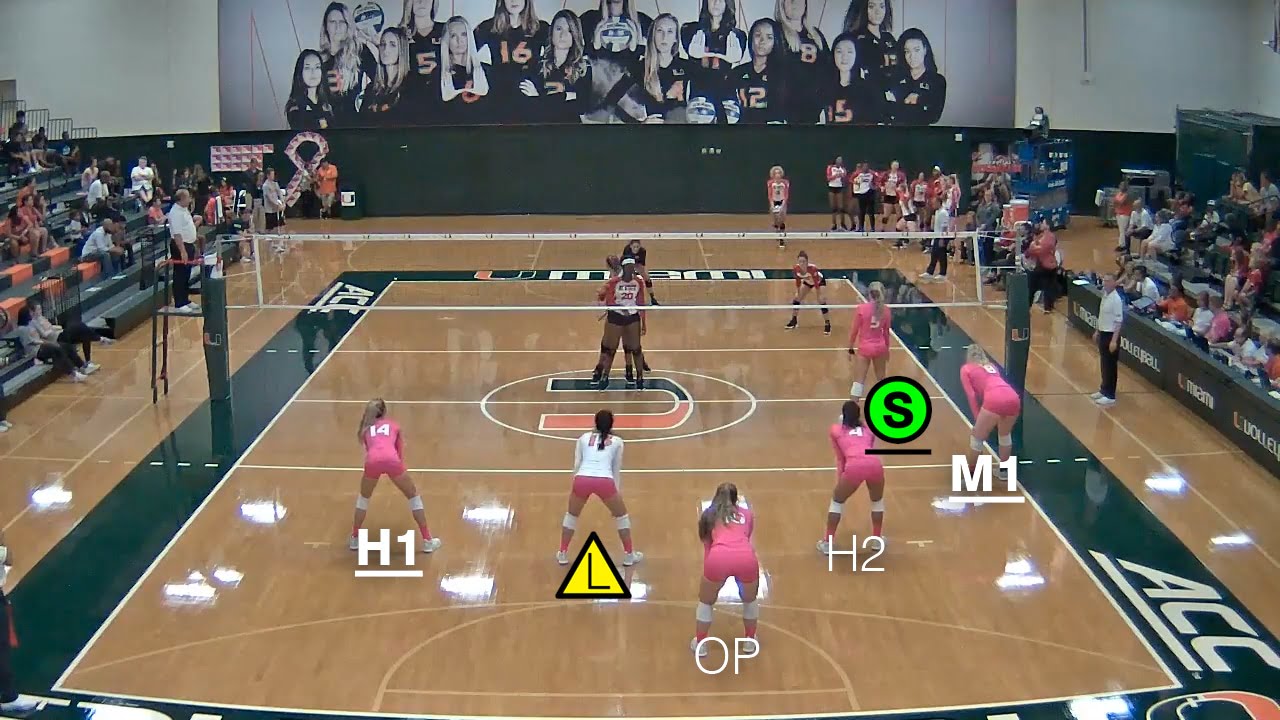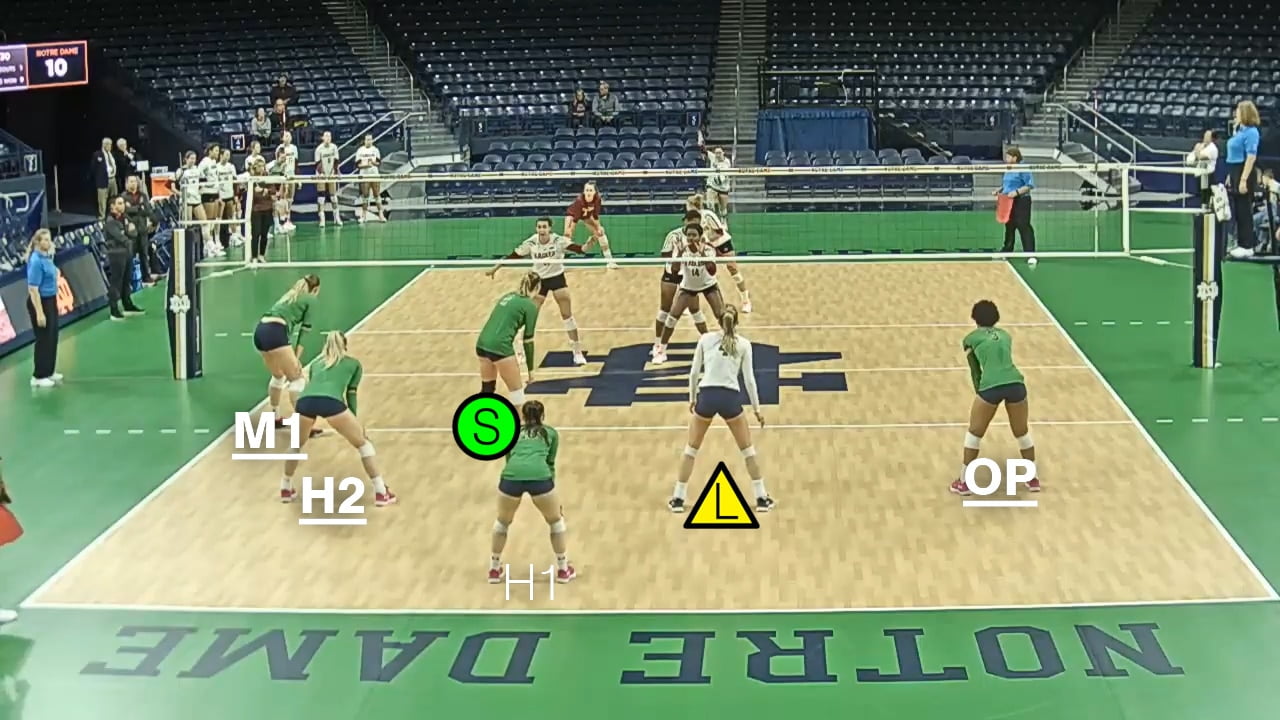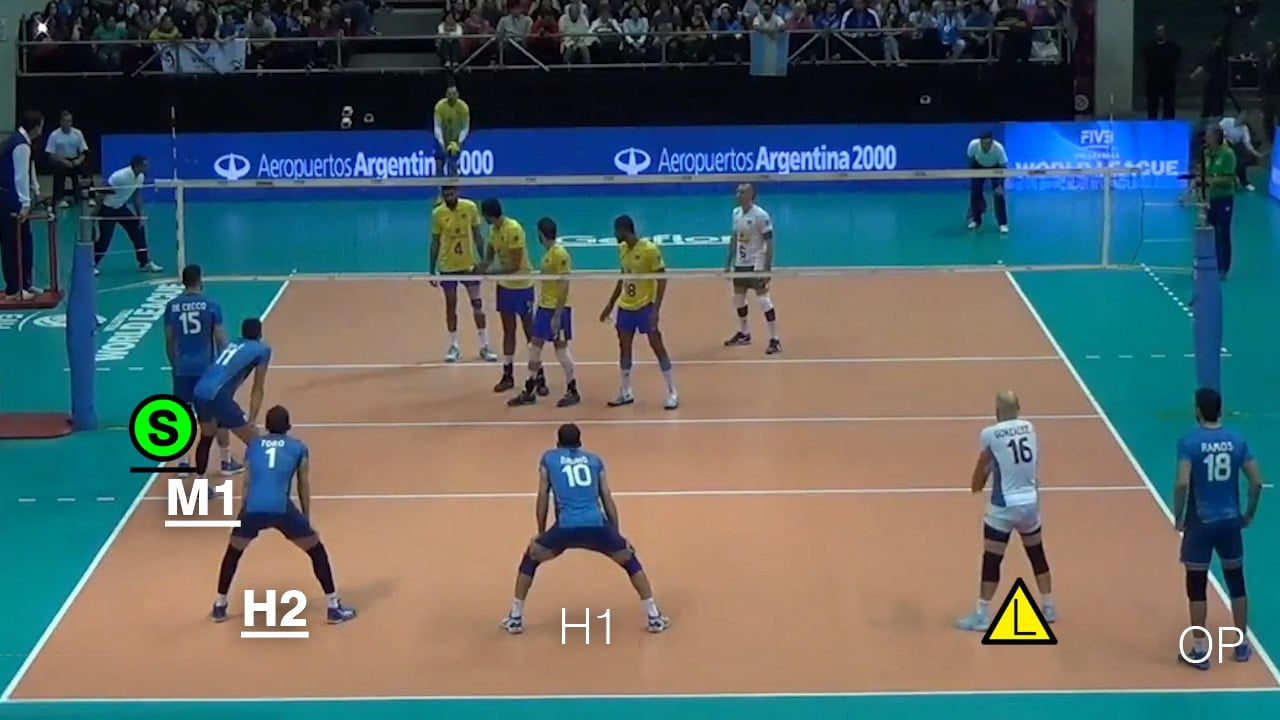THE 4-2 VOLLEYBALL ROTATION - AN INTRODUCTION
Volleyball coaches often look to use as many players as possible as offensive threats. Having more attackers usually results in an increase in the number and variation of plays that can be run, meaning more eye sequencing is required by the blockers to track all of the attackers. However, sometimes a coach has to be realistic about what attacking threats are available given the players on your roster. Will having more attacking players actually hinder the team’s ability to set up good attacks? Is the team’s offense still predictable? Are the teams still relying on one or two attackers who get set the most balls?
As with all the previous systems discussed, it is about finding a balance that suits your individual team. One alternative system that could be worth considering is the 4-2 volleyball rotation, or often times called the 4-2 volleyball system.
WHAT IS THE “4-2 VOLLEYBALL ROTATION”?
The 4-2 volleyball rotation is one of the most basic systems of volleyball. It eliminates the problems associated with having hybrid players or backrow setters, allowing for simplicity. This offensive system designates four players as attackers, and two players as setters. The two setters start opposite each other, usually in zones 1 and 4. The middles will then be in zones 3 and 6 and the outside attackers will be in zones 2 and 5, following the setters in the rotation order.
The way this system works is that the front-court setter always sets and the back-court setter essentially plays as a defender. When the setter in the backcourt rotates around to the front row, she becomes the setter for the next three rotations, and the other setter becomes a defender in the backcourt.
As always, sometimes a picture is worth a thousand words so if you are unclear, I would suggest taking a look at the GMS+ video which will walk you through the rotations.
WHERE DO POSITIONS PLAY WITH THE 4-2 VOLLEYBALL OFFENSE?
- The setter will always be a frontcourt player.
- Middles and outsides will continue in their roles as normal.
- No necessity to use any substitutions.
- Always have 2 attackers and a setter in the front row.
ADVANTAGES OF THE 4-2 OFFENSE - SIMPLE > COMPLEX
The simplicity of the 4-2 volleyball rotation is a great advantage when teaching players about the game of volleyball. With the setter always in the front row, there is very limited extra movement required by both setters to get into position when transitioning between offense and defense as they do not have to worry about coming in from the backcourt. Also, with less to think about, they are more able to focus on executing the required skills correctly and efficiently. Not only in transition is the situation simplified, but also during service reception, because the setters are only switching from front court zones.
THE 4-2 OFFENSE AND SETTERS
If you were to ask your setters what the most difficult aspect of their role is, they would probably say either trying to set balls passed tight on the net or chasing down stray passes (some might say it’s getting blamed for sets but that’s another matter). The 4-2 volleyball rotation helps with both of these situations by having the setter already in a position that allows her to best pursue a variety of passes.
If a team has a setter who can read the opposition blockers and is able to use the setter dump attack effectively at the right times, or even better a left-handed setter who can attack the ball, then this will always be a weapon. This increases the number of different tempo attacks, causing the opposition’s blocking unit to have to honor the setter as an attacker as well as a setter. Consequently, the opposing blockers will have more work to do to stop the offense and the chances of creating 1v1 situations at the net are increased.
Sometimes when running the 4-2 volleyball rotation, opposition teams may send over a free ball forcing the front court setter to play the first ball and then not be in a position to set. No problem – in this situation there is another setter playing in the backcourt who can step in to set just as effectively as the frontcourt setter. The team is also still able to run the preferred offensive tempo.
HITTING THE SLIDE IN A 4-2 VOLLEYBALL ROTATION
As with other systems discussed in previous blog posts, the slide attack can also be brought in as an effective offensive weapon for not only one, but both middles. This adds another dimension for the opposition blockers because they not only have to communicate about switching players to cover the slide attack, they also have to be keyed into the setter attacking the second ball and so a lot of communication has to occur in a very short period of time.
Players generally struggle with communicating effectively at any time so any extra communication required by the opposition blockers will usually give the attacking team an advantage.
From a defensive standpoint, there are always three designated defenders in the backcourt. In this 4-2 system, the player in zone 1 only has one job in defense - get the ball up.
4-2 ADVANTAGES SUMMARY
- Simple – setter is already in the front row so not so much chasing down poor passes.
- Setter dump attack is always a threat.
- Backcourt defense improves with three designated defenders.
- Less complicated service reception formations.
- Will always have an established setter available to set the 2nd ball if necessary.
- Middle slide attack is always an option.
4-2 DISADVANTAGES SUMMARY
First and foremost, this system requires two competent setters who are also able to block and play defense (or defensive specialists to sub in). Both setters will at some stage be setting from the frontrow for each of the four designated attackers so consistency between the way that both setters play and set could be a key factor as to whether this particular system is suitable for a team. If their styles are too dissimilar then the team’s attacking efficiency could suffer.
The next concern with this system is the lack of a consistent right-side attack. Very few teams would be able to run an efficient slide attack every play. Without a right-side attack, all available front-court attacking options are squeezed into a narrower space along the net (essentially between zones 3 and 4), and so there is more opportunity for the opposition to bunch block and set up a more stable defense.
Having more blockers in a smaller space means less movement required for them to form successful blocks. This can be counterproductive for the offense as forcing blockers to move more is an important factor when it comes to influencing poorly formed blocks.
Another issue with this system is the limitation of the number of attacking players on the court, which ultimately means the opposing defense has fewer attackers to focus on. We talk about the setter dump as a weapon, but it can’t be used in the same way that a right-side attacker can be, and so the opponent is faced with fewer strong aggressive swinging players to worry about. This means that the defense is able to focus more on the stronger attackers without the worry of conceding too many points from other attackers. For example, if a team has a very strong outside attacker who receives 50% of the sets, then opposition teams can stack against this attacker and increase their chances of gaining a transition opportunity whilst not giving away too many points from 1v1 situations elsewhere on the court.
Another aspect to be aware of is the added offensive responsibility that is placed on the primary attackers. When players are playing in all rotations, they have to be competent passers, but now both of the outsides also have to be effective offensive weapons. This is even more important in ‘out of system’ plays where the middles will be limited in attacking opportunities. Having fewer players to set to means that if one of the attackers is having an off day it can be very difficult to redistribute the workload to relieve some of the pressure on that player.
As mentioned in some of the previous systems, setters are being asked to be able to block and play a role as a frontcourt defender as well as set. Depending on the setter, this is not always as advantageous as having an opposite in place of one of the setters.
- Requires two competent setters who can also block and play defense.
- Consistency in setters’ style could be paramount to success.
- No designated right-side attacker at any point.
- Fewer front-court attackers – increased production responsibility on attackers.
- Opposition defense can set up against the best attackers.
WHO WOULD BENEFIT FROM USING A 4-2 VOLLEYBALL ROTATION?
This system is great when you want to simplify the game for a team with some experience or maybe progress a group of beginners from the basic “W+1” system (where everyone takes their turn in setting when they are in position 3) onto the next stage. In an environment where players are starting to learn the game then this can be very effective for teaching the players different roles whilst still being able to get valuable competitive repetitions. Decreasing the movement aspect of the game and the complications that come with setter penetration means that players can just focus on one job at a time.
This system would also be a good option if you struggle with finding players that can effectively attack from the right side of the court, but you have middles that can run a slide attack and two very good setters. Instead of having a player attack on the right side, you might be better off allowing the setters to have fewer movement patterns as their setting accuracy should therefore improve, and you have strong attackers playing in their preferred positions.
The slide attack still gives you the option of having an attack through the right side, but it can be mixed into the offense. As a team, it allows you to focus on your offensive strengths, making sure that players receive a quality set rather than sacrificing the set quality just to have a right-side attacker.
If you have good defensive players that you want to have as dedicated defenders in the backrow, and/or if you always want three backrow defenders, this is a good system to consider.
This system might also suit a team where different setters connect well with certain attackers, allowing you to pair up the strong connections.
TEAM STYLE SUMMARY
- Offensively middle and left-side focused.
- Teams that have stronger attacker/setter links with different setters.
- Teams with players starting to learn the game.
- Teams with two strong setters and weak options in right side attackers.
Want To Learn About More Common Offensive Systems?
5-1 Volleyball Rotations Explained
6-2 Volleyball Rotations Explained
4-2 Volleyball Rotations Explained (this article)
6-6 Volleyball Rotations Explained
6-3 Volleyball Rotations Explained







